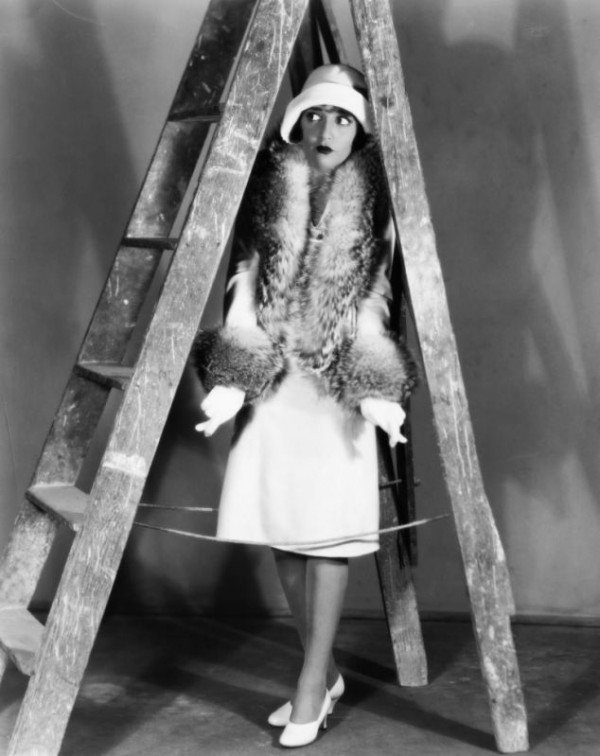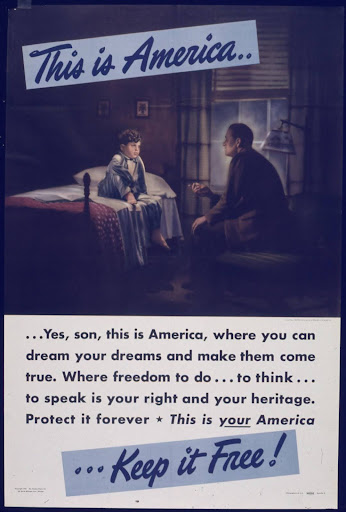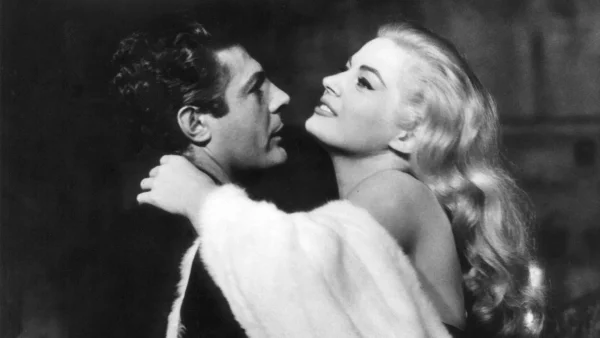13 Superstitions That Will Give You the Heebie-jeebies
© John Springer Collection/CORBI
Actress Bebe Daniels humorously crosses her fingers for good luck while she stands underneath a ladder. ca. 1928
November 5, 2015
Superstitions are not just for wise, old grandmas. In fact, superstitions find themselves in everyday behavior. Pretty much everyone has had a “wrong side of the bed” day and has knocked on wood in order to un-jinx themselves. In honor of Halloween, here are thirteen superstitions and why people believe in them.
- Breaking mirrors
In ancient Rome, the people believed that the life of a human refreshed itself every seven years, following moon cycles. Ancient Romans considered someone’s reflection to be that person’s soul. Because of this, they thought that if their reflection was shattered, so was that new seven years of a person’s health.
- Walking under a ladder
The ancient Egyptians thought that a wall with a ladder settled on it made a sacred triangle. To walk underneath it would disturb its spiritual energies. In France, a jailbird on his way to the gallows would be forced to walk under a ladder- known as man’s final unlucky act.
- Opening an umbrella indoors
This superstition actually does not have a very spooky meaning behind it. The very first umbrellas that were used for rain (the ones before were used for blocking the sun’s rays) were huge, clunky, and tightly-sprung. Opening one indoors would cause extreme bad luck for the user – not because of evil spirits and such, but from breaking the delicate trinkets known in Victorian times.
- Wearing black in mourning
In quite a few ancient cultures, such as China and Persia, death was thought to be contagious. Sprouting from this, Roman mourners wore the color black to warn people to stay away from them.
- Jumping over a broom at weddings
Now known as a festivity celebrating a newly-wedded couple’s new life together, jumping the broom once meant that the couple would actually jump over a broom to show the audience that one of the newlyweds was not an evil doppelganger.
- Knock on wood
Many cultures believed evil ghouls were housed inside wood. When knocked on, an evildoer spirit would be frightened away or shaken out.
- Spilling Salt
Since its inception, salt has been a curious subject of magic. In the European Middle Ages, families would leave a trail of salt outside their house’s door in belief that witches would stop to count every single grain of salt before entering the house. In Leonardo Da Vinci’s painting of the Last Supper, Judas is shown spilling a container of salt, foreshadowing his betrayal. Finally, in order for one to un-jinx oneself after spilling salt, one absolutely must toss a sprinkle of salt over their left shoulder to blind the demon waiting behind them.
- Waking up on the wrong side of the bed
The “wrong” way to get out of bed is getting out on the left. This is because of the Ancient Egyptian belief that everything on the left side is associated with death and destruction. Some hotels and casinos nowadays even arrange their rooms to have the left side of the bed against the wall.
- Something old, something new, something borrowed, something blue
According to List25, “This popular wedding tradition is said to have originated during the Victorian era and involves giving the bride various gifts. One is something old and represents continuity; another is new and represents hope and the future; the third is borrowed and symbolizes borrowed happiness while the last is blue and is supposed to bring purity, love, and fidelity.”
- Ringing of the bells
Bells are rung on happy occasions in order to frighten evil spirits away.
- Counting crows
“One’s bad / Two’s luck / Three’s health / Four’s wealth / Five’s sickness / Six is death.” This is a popular rhyme that is used to count the crows in a murder. The number of crows predicts one’s future.
- Black cats
In England, single, elderly women who were owners of cats were prime targets for witch trials. This slapped cats with a bad reputation of being the pets of witches. Also, the color black was thought to be evil and unlucky, so a black cat would have the “best” of both worlds.
- The number 13
The fear of the number 13 itself is called triskaidekaphobia. This fear was first recorded in ancient India, where it was unlucky to have thirteen people at a table. Similarly, in the Bible, Judas is the thirteenth man in the apostleship, the man who betrayed Jesus. Friday the 13th is also a superstitious day, when unlucky events are believed to be more likely to occur. This might be because the mass execution of the medieval Knights Templar happened on Friday the 13th.










